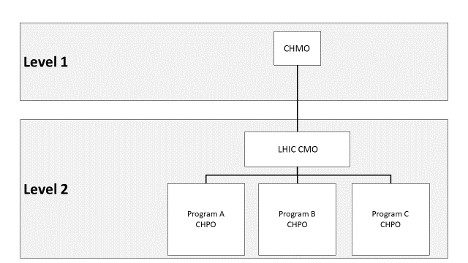
Procedural
Requirements
Effective Date: September 08, 2020
Expiration Date: September 08, 2025

|
NASA Procedural Requirements |
NPR 7120.11A Effective Date: September 08, 2020 Expiration Date: September 08, 2025 |
| | TOC | Preface | Chapter1 | Chapter2 | Chapter3 | Chapter4 | Chapter5 | AppendixA | AppendixB | AppendixC | ALL | |
3.3.1 The endpoints associated with the activities of HMTA in programs and projects are the provision for the direct management of the health and performance of flight crews in operations, and the protection of human health through the application of task-based performance standards in the integration and processing of flight vehicles. Through support for the practice of medicine, the CHMO delegates TA directly to Center CMOs as decisional integrators. Below these Center CMO's, then functions the HMTA CHPO's, who are not necessarily physicians, and serve as the direct working interface to NASA's programs and projects. This flow between physicians from L1 to L2 in HMTA is in deference to the fact that while the HMTA content is not in total medical content, there is significant direct medical practice content present in the HMTA scope, which requires decisional flow from physician to physician (See Figure 3).

Figure 3. HMTA Delegations and Scope of Authority
3.3.2 The LHIC CMO, as delegated from the CHMO, shall make decisions that they determine to be risk-neutral or reduce overall risk.
3.3.3 The LHIC CMO shall develop and document a Risk-Based Decision-Making process for the management of HMTA issues for programs and projects under the designated area.
3.3.4 Prior to providing programs and/or projects with an HMTA decision on positions, issue resolution, and requests from relief deemed either risk-neutral or a reduction in risk, the LHIC CMO shall inform the CHMO or their designee. This "decide and inform" philosophy is vital for an effective implementation of the HMTA.
3.3.5 For issues representing an increase in risk posture as indicated by a change in their likelihood and consequences, the LHIC CMO shall investigate, evaluate, and make a recommendation to the CHMO for decision.
3.3.6 The CHPO has authority to make decisions within the scope delegated by the LHIC CMO, according to their respective HMTA Implementation Plan. Subsequent to providing programs and/or projects with HMTA decisions, CHPOs shall inform LHIC CMO, as part of the HMTA "decide and inform" philosophy.
3.4.1 The HMTA is implemented through the application of resources and processes documented in this directive and Center HMTA Implementation Plans. Center HMTA Implementation Plans describe the effective execution of HMTA at each Center with required organizational and funding separation from programs and projects. Centers shall develop their respective HMTA Implementation Plans and obtain concurrence from the CHMO.
3.4.2 The CMO shall include the following content in their respective HMTA Implementation Plan:
a. Description of organizational structure and staffing of program and project support.
b. Description of the level of delegation of HMTA to the CMO.
c. Responsibilities and scope of delegated authority of CHPOs and other interfaces with programs or projects.
d. Description of processes for requirements management and adjudication of requests for relief.
e. Description of processes for management of formal dissents.
f. Personnel training plan.
g. If, at a designated LHIC, description of a Risk-Based Decision-Making process for management of HMTA issues.
| TOC | Preface | Chapter1 | Chapter2 | Chapter3 | Chapter4 | Chapter5 | AppendixA | AppendixB | AppendixC | ALL | |
| | NODIS Library | Program Formulation(7000s) | Search | |
This document does not bind the public, except as authorized by law or as incorporated into a contract. This document is uncontrolled when printed. Check the NASA Online Directives Information System (NODIS) Library to verify that this is the correct version before use: https://nodis3.gsfc.nasa.gov.